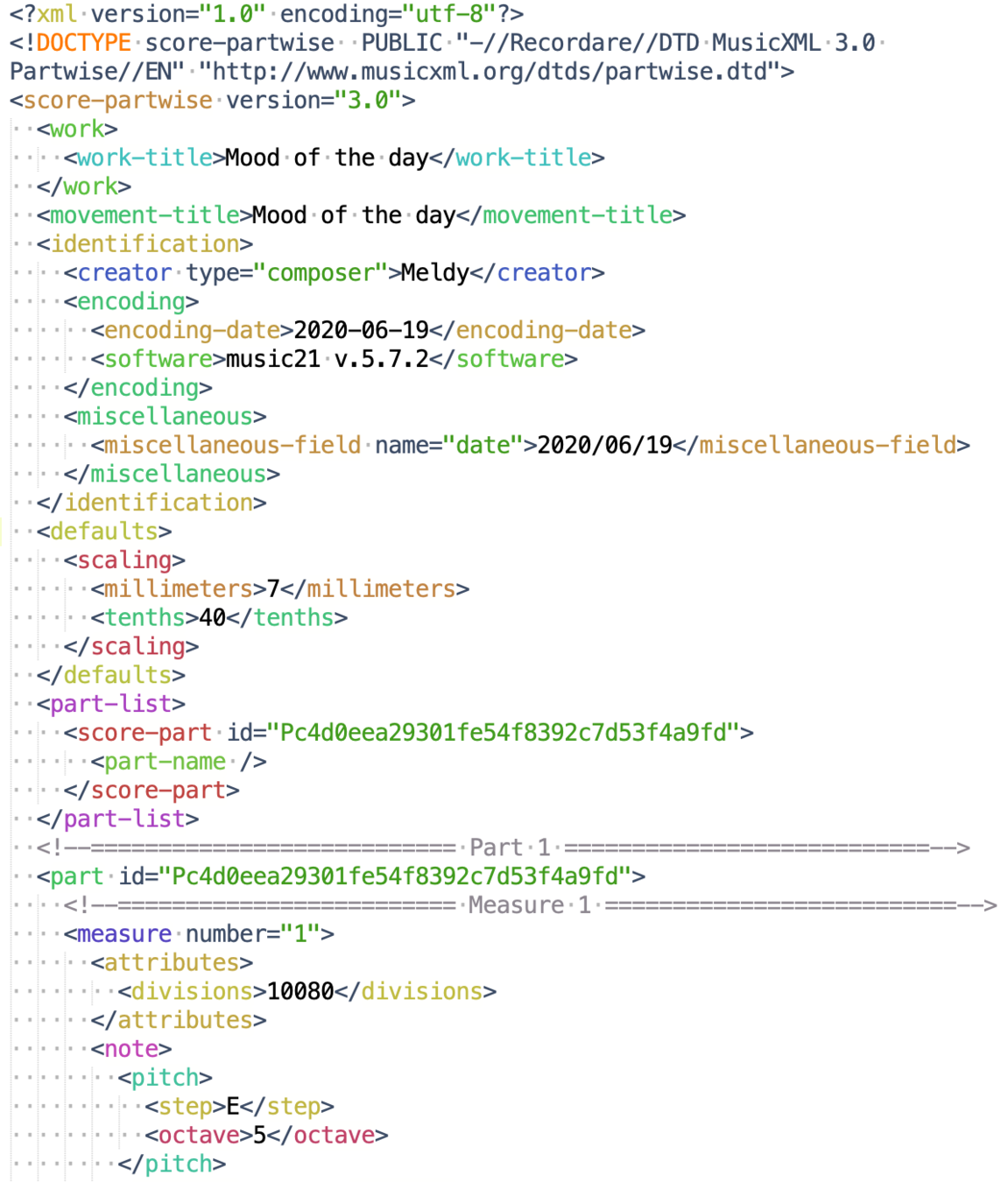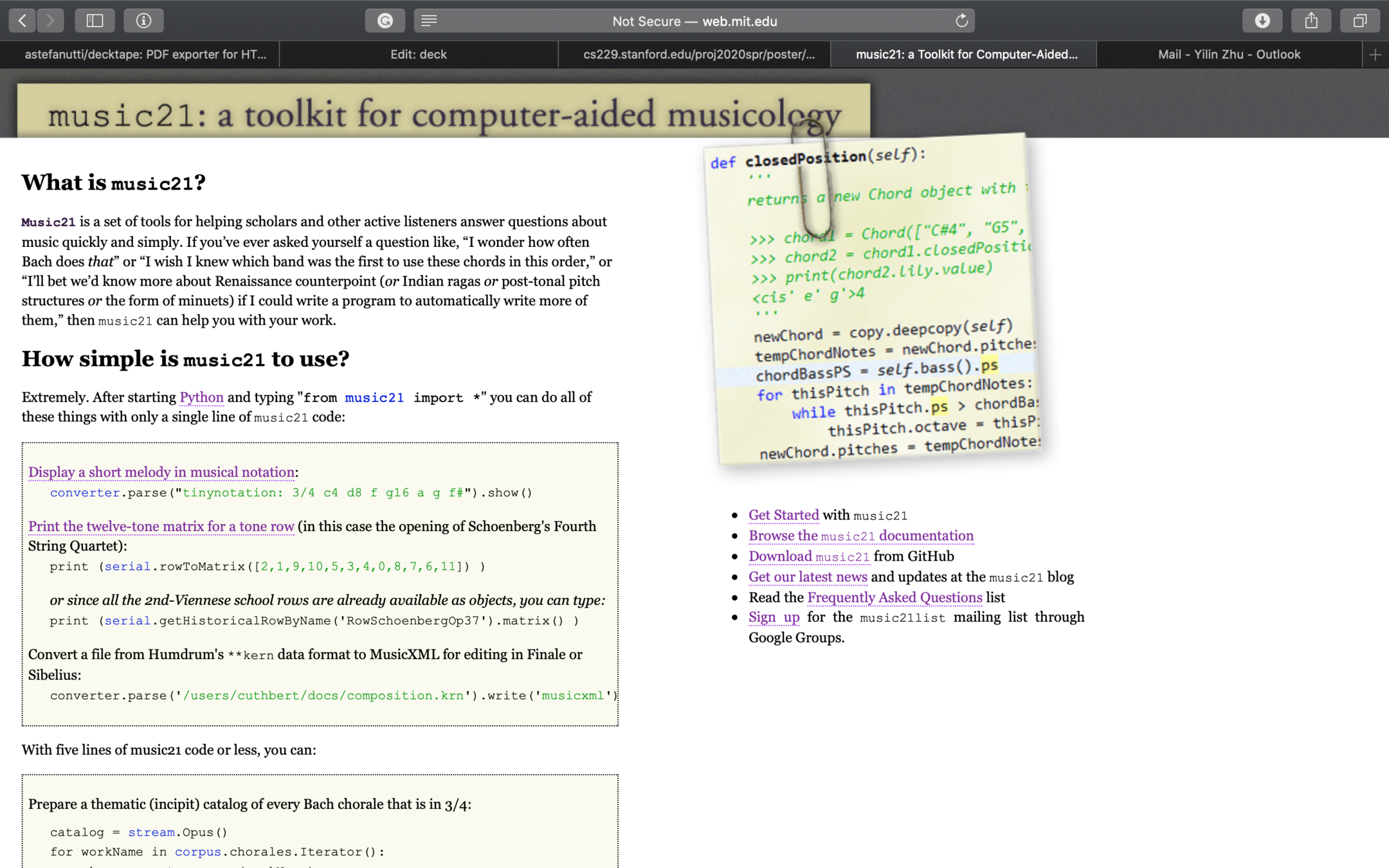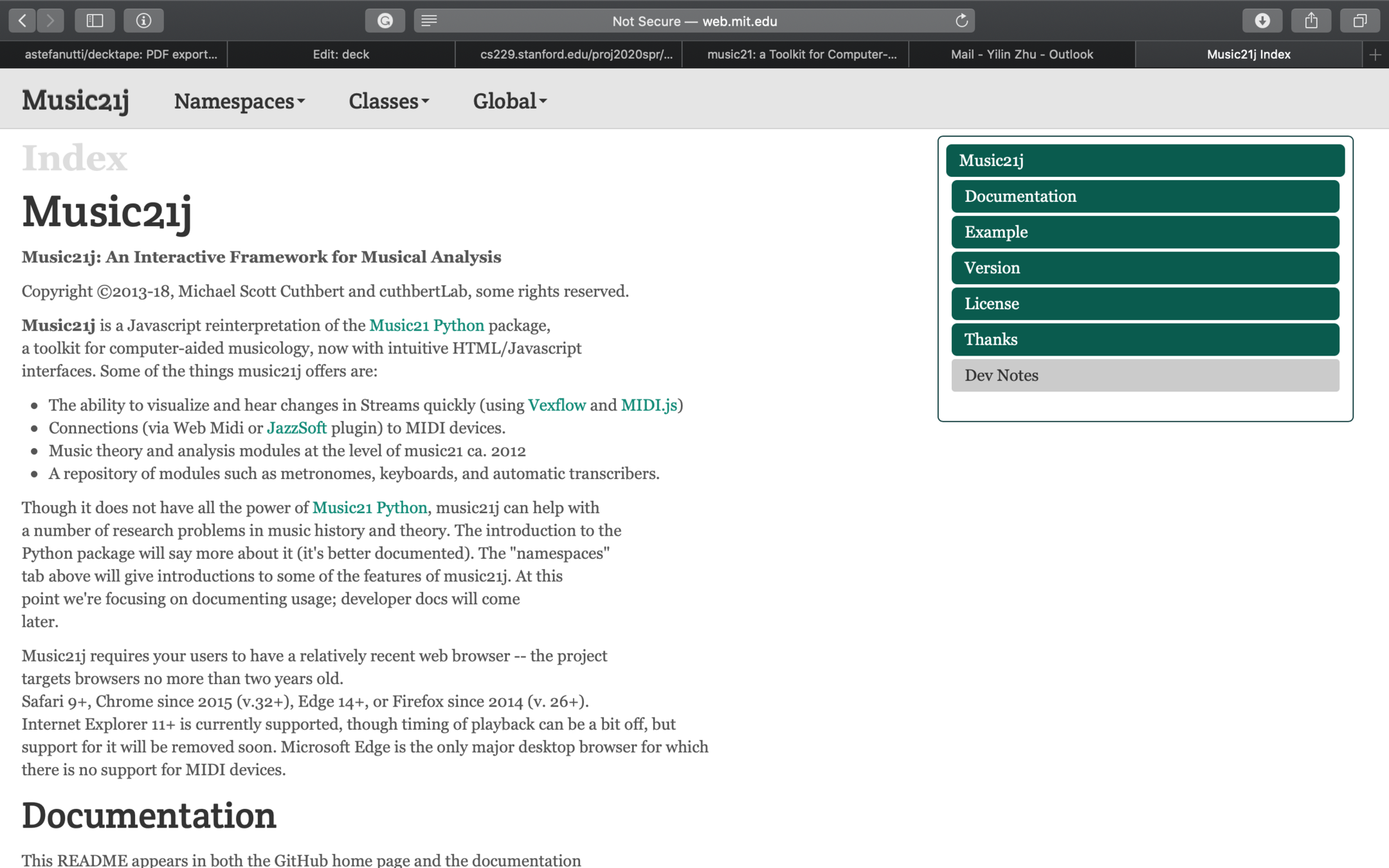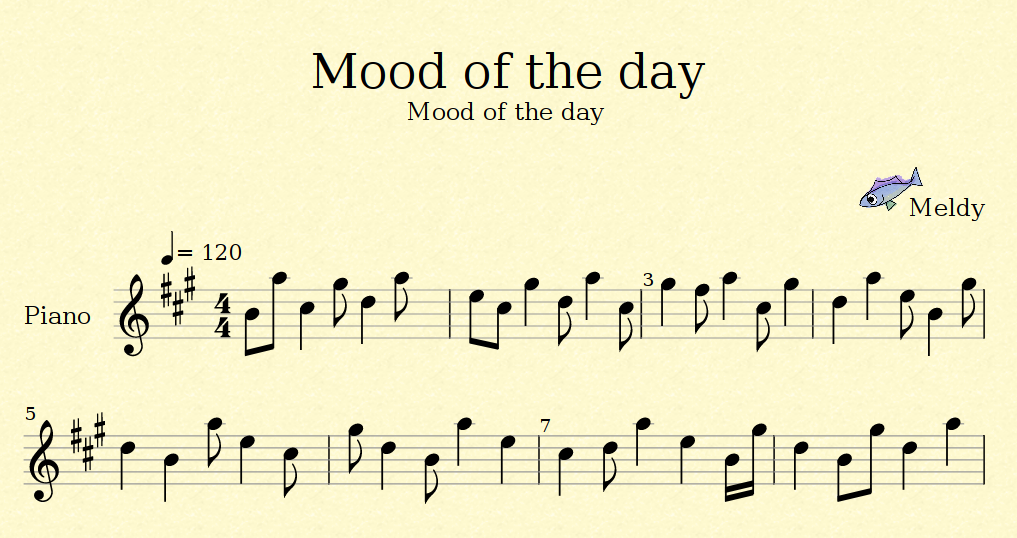Meldy: a music generator
Matteo Bernardini, Yilin Zhu
{10743181,10702368}@mail.polimi.it
ACTAM & CMRM Project 2019-2020
Overview of the Project
Project Structure
Topics
- Computer Music
- Theoretical C.S.
- Computational Creativity
Resources
- music21: computer-aided musicology toolkit
- p5.js: web visualization
- OSMD: MusicXML rendering
- webpack: development

1) User Input
-
2D picker: strength of a mood
- implemented using p5.js
- Dimensional approach from MER
- x-axis: valence, in range [0, 1]
- y-axis: arousal, in range [0, 1]
Choose a mood as input
2) Melody Generation
2.1 Mapping from mood to music features

- valence & arousal
- higher valence -> brighter mode
- higher arousal -> higher pitch
- higher arousal -> faster tempo
2) Melody Generation
2.2 Time signature
- different moods -> different rhythmic patterns
- 4/4 : stability
- 3/4 : danceability
- odd time signatures (e.g. 7/8): tension and instabilities
We decided to ignore this aspect and simply stick on a 4/4, in order to have a better focus on the other main features and simplify the approach for durations generation.
2) Melody Generation
2.3 Key signature
- mode is decided before, we need a root note
- our approach: pick a random root within the possible 12 pitches of the cromatic scale
-
first problem: Not all possible combinations of root names and mode are theoretically valid
- usual names -> C C# D Eb E F F# G Ab A Bb B
-
second problem: these are usual names only for ionian mode
- pick random "base root" in ionian -> rotate to mode (e.g. base: C#, mode: lydian -> key: F# lydian)
2) Melody Generation
2.4 Melodic Sequence
- Base model: L-system (Formal Grammar)
$$ G = \{V, \omega, P\} $$ - \(P\) and \(\omega\) are stochastic
- Extended model: different rulesets and a selection parameter
$$ G = \{V,\omega,R,p\} \qquad R = \{ (P_1,s_1), (P_2,s_2),\cdots\} \qquad p \in \mathbb{R} $$ - Two separate grammars for generating:
- Sequence of pitches
- Sequence of durations
2) Melody Generation
2.4 Melodic Sequence
- \(p\) is used to select which \(P_i\) to use
- \(P_i\) is used for the grammar if \(|p-s_i|\) is the minimum difference among the defined rulesets
- This model introduces further variability over a basic L-system
2) Melody Generation
2.5 Pitches
-
mood from input -> Key signature
- use relative degrees instead of actual pitches
- we can do the transposition later
-
valence influences the melody (i.e. p=valence)
- positive -> uplifting
- negative -> downwards
-
vary between two rulesets:
- higher valence (s=1)
higher probabilities to be uplifting, create consonant melodic intervals. - lower valence (s=0)
downwards, dissonant melodic intervals
- higher valence (s=1)

2) Melody Generation
2.6 Durations
-
simplify the task:
- stick to 4/4
- define durations with "1" = "quarter note"
-
vary between 3 rulesets (p=arousal):
- higher arousal (s=1)
add faster notes (8ths and 16ths) and syncopations - middle arousal (s=0.5)
remove faster notes and syncopations - low arousal (s=0)
simple and straight rhythms
- higher arousal (s=1)

2) Melody Generation
2.7 Output format

- MusicXML: aimed to music representation, better suited than MIDI
- Natively supported by music21

3) Resources
- First attempt: music21j
- not mature enough, several bugs
- not mature enough, several bugs
- Conclusion: music21 (python version)
- back-end needed for this step
3.1 Musicology Tools: Music21



3) Resources
3.2 Development Pipeline

4) Music Rendering
- User clicks the Impress Me button → view switch
- Rendering MusicXML to Music Notation
- OpenSheetMusicDisplay: TypeScript Library
- output as SVG, rendered natively by browser
4.1 Show Sheet Music


4) Music Rendering
- Play → listen to the generated music
- Download → save MusicXML (open with Finale, Sybelius, ...)
- Restart → go back to the mood selection view
4.2 Play and listen to it
Future Works
- Enhance grammar model accuracy
* try to apply some evaluation or reward function - From single melodic paragraph to multi-paragraphs
- Introduce different musical forms (e.g. sonata)
- Other music elements (e.g. different time signature)
How can we improve this project

Reference & Links
Thanks for your attention!
-
McCormack J. Grammar based music composition[J]. Complex systems, 1996, 96: 321-336.
-
music21 Reference Documentation
-
webpack Documentation